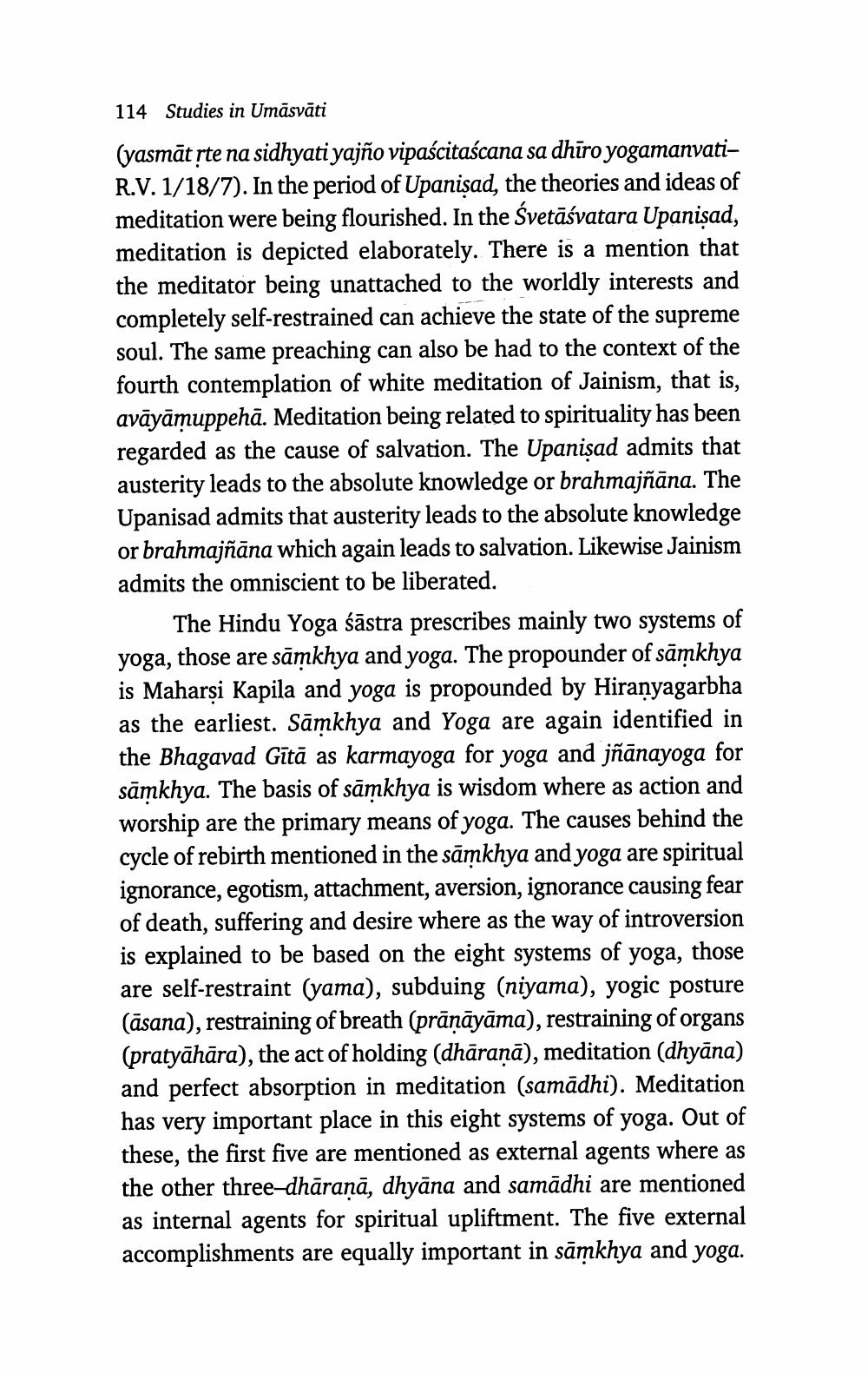________________
114 Studies in Umāsvāti
(yasmat ṛte na sidhyati yajño vipaścitaścana sa dhiro yogamanvatiR.V. 1/18/7). In the period of Upanisad, the theories and ideas of meditation were being flourished. In the Svetasvatara Upanisad, meditation is depicted elaborately. There is a mention that the meditator being unattached to the worldly interests and completely self-restrained can achieve the state of the supreme soul. The same preaching can also be had to the context of the fourth contemplation of white meditation of Jainism, that is, avāyāṇuppehā. Meditation being related to spirituality has been regarded as the cause of salvation. The Upanisad admits that austerity leads to the absolute knowledge or brahmajñāna. The Upanisad admits that austerity leads to the absolute knowledge or brahmajñāna which again leads to salvation. Likewise Jainism admits the omniscient to be liberated.
The Hindu Yoga śāstra prescribes mainly two systems of yoga, those are sāmkhya and yoga. The propounder of samkhya is Maharṣi Kapila and yoga is propounded by Hiranyagarbha as the earliest. Samkhya and Yoga are again identified in the Bhagavad Gītā as karmayoga for yoga and jñānayoga for sāmkhya. The basis of sāmkhya is wisdom where as action and worship are the primary means of yoga. The causes behind the cycle of rebirth mentioned in the samkhya and yoga are spiritual ignorance, egotism, attachment, aversion, ignorance causing fear of death, suffering and desire where as the way of introversion is explained to be based on the eight systems of yoga, those are self-restraint (yama), subduing (niyama), yogic posture (āsana), restraining of breath (prāṇāyāma), restraining of organs (pratyāhāra), the act of holding (dhāraṇā), meditation (dhyāna) and perfect absorption in meditation (samadhi). Meditation has very important place in this eight systems of yoga. Out of these, the first five are mentioned as external agents where as the other three-dhāraṇā, dhyāna and samadhi are mentioned as internal agents for spiritual upliftment. The five external accomplishments are equally important in samkhya and yoga.




